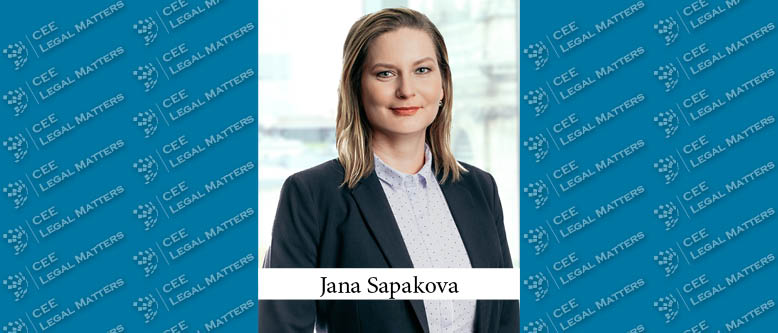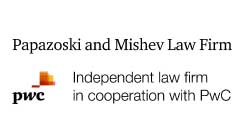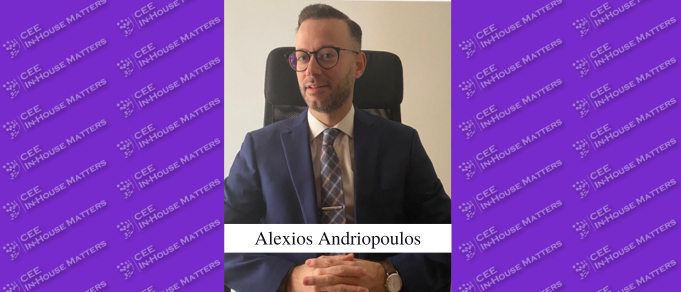Eversheds Sutherland’s Bratislava office has expanded its offering with an additional line of service – customized in-house trainings. Counsel Jana Sapakova talks about these new trainings.
CEELM: For starters, how did the original idea for the Customized In-House Trainings project come up?
Sapakova: We have been offering specialized training sessions to business professionals since before COVID-19, though our approach was a bit different back then.
Prior to the onset of the pandemic, our approach involved almost exclusively working with our own clients. We would select a topic, reach out, and organize meetings that resembled more of a business breakfast than formal trainings. Once the pandemic hit, we were no longer able to continue with these offline sessions. This forced us to adapt and transition to an online format. This shift presented its own set of challenges as everyone was grappling with the sudden change.
After a few years of online work, we started receiving some interesting feedback from our external partners, informing us that their clients were expressing a growing interest in specific trainings tailored to their unique needs. This prompted us to rethink our approach and explore the possibility of offering customized trainings for individual businesses and companies.
We decided to move ahead with it and now we aim to provide hyper-localized trainings that take into account specific frameworks that correspond to the business realities of the companies that approach us. We strive to keep these sessions small, focusing on groups of five or six individuals, rather than organizing full-blown 20+ people teaching sessions.
CEELM: What is the aim of Eversheds in putting these trainings forward?
Sapakova: Our primary objective is to go above and beyond for our clients. As someone who specializes in labor law, my main focus revolves around working closely with HR managers. We are fortunate to have some significant clients, with workforces ranging from 2,000 to 4,000 employees. In order to provide them with the most comprehensive and reliable legal resources, it is essential to truly understand each of their specific needs and, by crafting engaging trainings and establishing a strong rapport, we gain a deeper understanding of their internal processes and organizational dynamics. These tailored and informative trainings enable us to build long-term relationships with our clients.
CEELM: What is covered in the trainings?
Sapakova: I primarily focus on employment law and the target audience consists mainly of HR managers, as I mentioned. Employment law is a field that requires businesses to constantly monitor for changes in the legal landscape to be able to react quickly.
We also involve other practice groups such as those focusing on the GDPR, ESG, commercial and corporate, and compliance. These topics have become increasingly important for our clients in recent times. When we are preparing a lecture or training for a specific client, we always begin by engaging them in a conversation to understand their specific needs. This initial discussion allows us to tailor our approach and draw relevant elements from our repository of existing trainings. With each new client, we improve our approach and offer better service each subsequent time.
CEELM: What do these trainings look like in practice? What is the commonly-used format?
Sapakova: To create an inviting learning environment, we invest a significant amount of time in preparing engaging materials. Also, we constantly encourage participants to take an active part in these sessions by asking questions, moving around, and interacting with the content. Our ultimate goal is to avoid a traditional lecture-style approach and instead foster a stimulating and dynamic atmosphere.
The sessions usually last between three and four hours, which we have found to be optimal to keep everyone invested. Of course, we are not strangers to longer engagements – we once delivered a three-day training for a client, with each day consisting of up to five hours of training. However, such longer trainings are quite challenging as participants have to absorb a significant amount of information and process it effectively.
Either way, we always incorporate numerous examples from our own experiences and practice. This approach not only provides participants with real-world scenarios but also invites them to actively participate in discussions. By presenting challenges that participants are likely to encounter themselves, in their own daily work, they are more vested in participating and consequently retain more information.
CEELM: Who’s delivering the trainings?
Sapakova: Typically, it is the Partners or Counsels who lead these sessions. However, we have recognized the benefits of involving our younger colleagues at times as well.
We believe that senior team members bring a wealth of experience from handling client cases, which adds immense value to the training sessions. Indeed, clients often find it more advantageous when they interact with senior professionals who have a broader understanding of their specific needs and challenges.
Junior colleagues do benefit from these as well – just recently, we have brought on a few Associates to help out during a training initiative that was organized in collaboration with the Slovak-Austrian Chamber of Commerce. By including our younger team members, we ensured that they could also gain valuable insights from the training. Of course, we do not let junior staff conduct the trainings independently.
CEELM: Who are you targeting with this project, primarily?
Sapakova: We usually focus on engaging with positions just below the decision-making level rather than directly targeting decision-makers themselves. For instance, in the field of employment law, our primary audience is HR managers who play a crucial role in shaping organizational policies. When it comes to industries like energy or pharmaceuticals, the target audience may include salespersons or other similar roles who have significant operational influence.
We understand that executive managers are often preoccupied with numerous responsibilities which makes it challenging for them to dedicate time to training sessions. Therefore, we primarily focus on those members of their organizations who are engaged in an advisory capacity. By focusing on these individuals, we ensure that our message reaches the right people, ultimately, and that our services are effective in making an impact.
CEELM: Finally, what would you say makes your program unique?
Sapakova: I believe we possess several advantages, overall.
Firstly, one of the key aspects is our ability to provide these trainings in-house. Unlike many other business training programs, we have the flexibility to travel and conduct the training directly at the client’s site. This saves the employees from the hassle of traveling to a different location and allows us to deliver a more immersive and hands-on experience.
Secondly, we also offer competitive pricing compared to other business training options. By providing lower costs, we ensure that businesses of varying sizes and budgets can access our training sessions without compromising on quality.
Finally, there is our multilingual capability. We are proficient in conducting trainings in Slovak, English, and German. This linguistic flexibility gives us an edge in the market, allowing us to cater to a wider range of clients and effectively communicate with diverse teams.
This article was originally published in Issue 10.6 of the CEE Legal Matters Magazine. If you would like to receive a hard copy of the magazine, you can subscribe here.





















